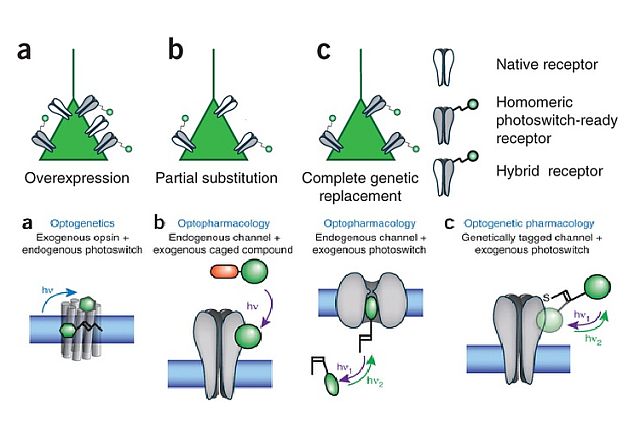- Home
- Science
- Science News
- New Light Sensitive Protein Can Control Brain From Outside
New Light-Sensitive Protein Can Control Brain From Outside

In a boost to optogenetics, a technology allowing scientists to control brain activity by shining light on neurons, the first light-sensitive molecule that enables neurons to be silenced non-invasively using a light source outside the skull has been developed.
Optogenetics relies on light-sensitive proteins that can suppress or stimulate electrical signals within cells and require a light source to be implanted in the brain.
But now engineers at Massachusetts Institute of Technology in the US have made it possible to do long term studies without an implanted light source. The protein, known as Jaws, also allows a larger volume of tissue to be influenced at once.
This non-invasive approach could pave the way to using optogenetics in human patients to treat epilepsy and other neurological disorders, the researchers said.
Optogenetics, a technique developed over the past 15 years, has become a common laboratory tool for shutting off or stimulating specific types of neurons in the brain, allowing neuroscientists to learn much more about their functions.
To develop the non-invasive technique, the researchers turned to the natural world. Many microbes and other organisms use opsins to detect light and react to their environment. Most of the natural opsins now used for optogenetics respond best to blue or green light.
The researchers had previously identified two light-sensitive chloride ion pumps that respond to red light, which can penetrate deeper into living tissue. However, these molecules, found in the bacteria Haloarcula marismortui and Haloarcula vallismortis, did not induce a strong enough photocurrent - an electric current in response to light - to be useful in controlling neuron activity.
Amy Chuong from MIT set out to improve the photocurrent by looking for relatives of these proteins and testing their electrical activity.
She then engineered one of these relatives by making many different mutants. The result of this screen, Jaws, retained its red-light sensitivity but had a much stronger photocurrent, enough to shut down neural activity.
"This exemplifies how the genomic diversity of the natural world can yield powerful reagents that can be of use in biology and neuroscience," said Ed Boyden from MIT.
Using this opsin, the researchers were able to shut down neuronal activity in the mouse brain with a light source outside the animal's head.
The findings appeared in the journal Nature Neuroscience.
For the latest tech news and reviews, follow Gadgets 360 on X, Facebook, WhatsApp, Threads and Google News. For the latest videos on gadgets and tech, subscribe to our YouTube channel. If you want to know everything about top influencers, follow our in-house Who'sThat360 on Instagram and YouTube.
- Samsung Galaxy Unpacked 2025
- ChatGPT
- Redmi Note 14 Pro+
- iPhone 16
- Apple Vision Pro
- Oneplus 12
- OnePlus Nord CE 3 Lite 5G
- iPhone 13
- Xiaomi 14 Pro
- Oppo Find N3
- Tecno Spark Go (2023)
- Realme V30
- Best Phones Under 25000
- Samsung Galaxy S24 Series
- Cryptocurrency
- iQoo 12
- Samsung Galaxy S24 Ultra
- Giottus
- Samsung Galaxy Z Flip 5
- Apple 'Scary Fast'
- Housefull 5
- GoPro Hero 12 Black Review
- Invincible Season 2
- JioGlass
- HD Ready TV
- Laptop Under 50000
- Smartwatch Under 10000
- Latest Mobile Phones
- Compare Phones
- Oppo A5 Pro 5G
- Vivo Y29 5G
- Honor Magic 7 RSR Porsche Design
- Moto G15 Power
- Moto G15
- Realme 14x 5G
- Poco M7 Pro 5G
- Poco C75 5G
- Asus Zenbook S 14
- MacBook Pro 16-inch (M4 Max, 2024)
- Honor Pad V9
- Tecno Megapad 11
- Redmi Watch 5
- Huawei Watch Ultimate Design
- Sony 65 Inches Ultra HD (4K) LED Smart TV (KD-65X74L)
- TCL 55 Inches Ultra HD (4K) LED Smart TV (55C61B)
- Sony PlayStation 5 Pro
- Sony PlayStation 5 Slim Digital Edition
- Blue Star 1.5 Ton 3 Star Inverter Split AC (IC318DNUHC)
- Blue Star 1.5 Ton 3 Star Inverter Split AC (IA318VKU)












